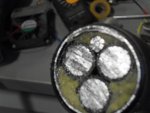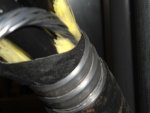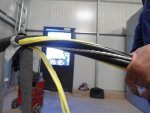ghostbuster
Senior Member
- Location
- Great White North
Not familiar with electrical code in your country.
Site has 480 volt 350 mcm 3 conductor (3 phase) plus bare wire ground in bundle.Having induced ground current issues at this site.
Is it possible to ground the bare wire ground at the source end (leave load end bare wire ground floating) and use the sheath grounded at both ends as the load equipment ground bond?--in our country this is not allowed
Thanks for any guidance
Site has 480 volt 350 mcm 3 conductor (3 phase) plus bare wire ground in bundle.Having induced ground current issues at this site.
Is it possible to ground the bare wire ground at the source end (leave load end bare wire ground floating) and use the sheath grounded at both ends as the load equipment ground bond?--in our country this is not allowed
Thanks for any guidance




